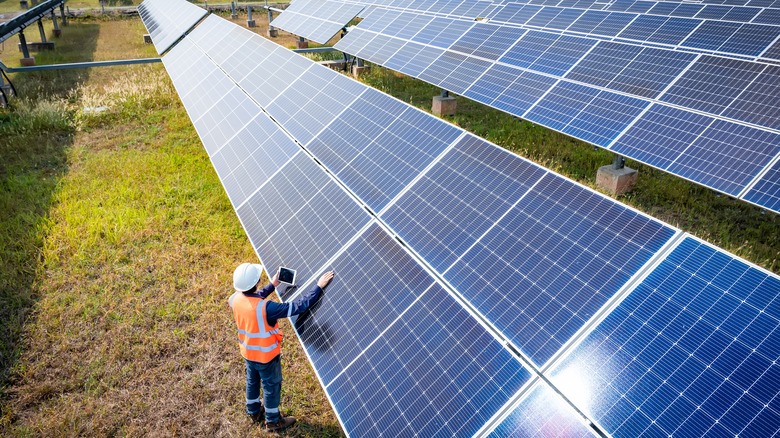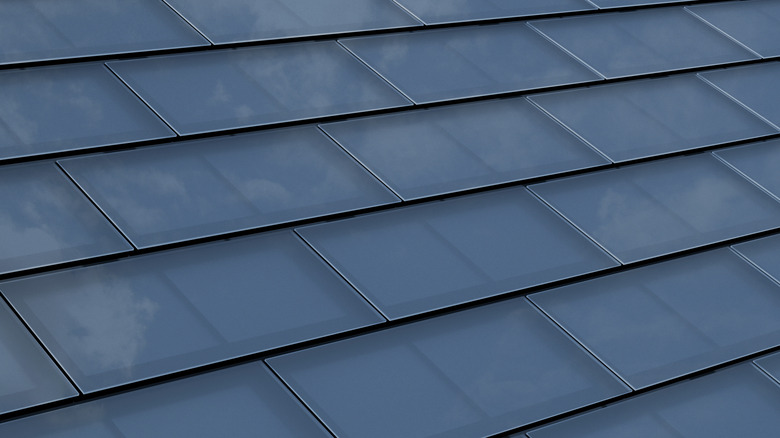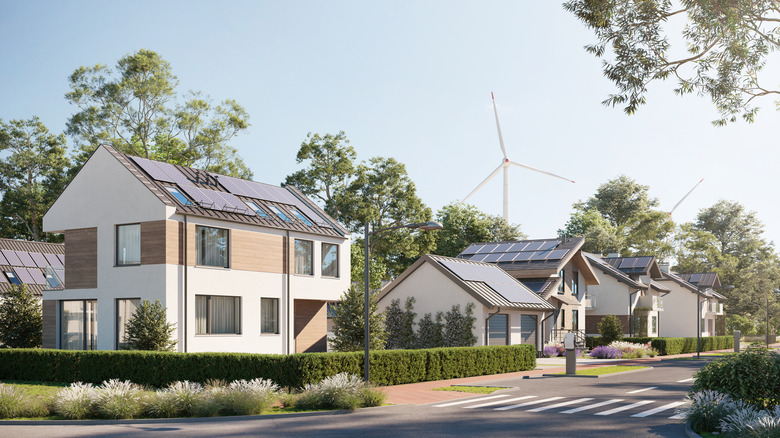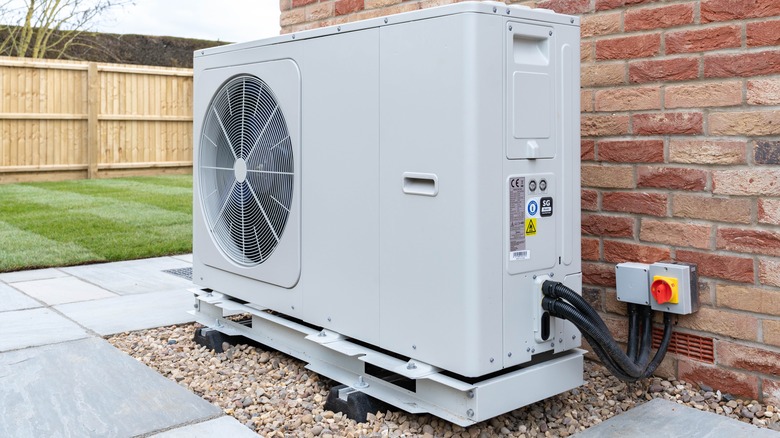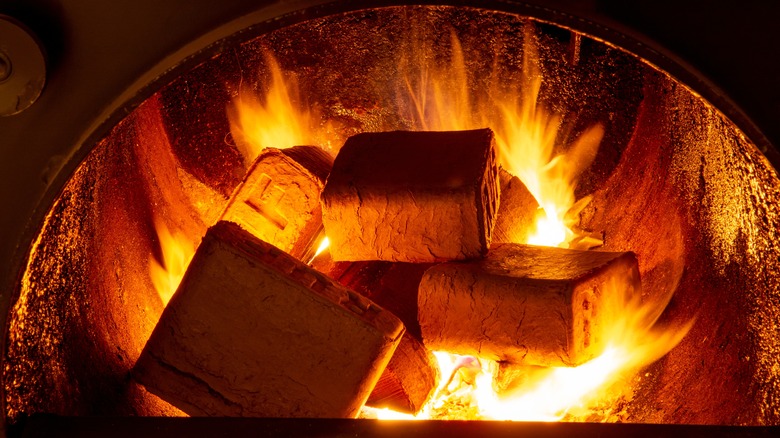5 Green Energy Alternatives For Homes That Can't Use Solar Panels
Solar panels come to mind when many think of leading a greener lifestyle. For years, experts have told us that solar panels are a renewable energy source that can lower our carbon footprint, reduce our electricity bill, and even increase the value of our homes. However, for many of us, solar panels aren't an option.
Let's say you rent an apartment or a house. In that case, no matter how much you'd like to contribute to the well-being of the planet by switching to solar power, unless you find a community powered by solar panels or a landlord willing to install them, it's unlikely you'll be able to make the switch on your own.
Depending on what part of the country you live in, even if you own your home, your homeowners association (HOA) may have rules against installing solar panels. Sometimes, it just comes down to living in a part of the country where your home doesn't get much sun, making solar panels less than optimal. You may think that if you fall into one of the above categories, you'll have to continue relying on fossil fuel-powered electricity sources. However, that couldn't be further from the truth. Green energy alternatives for homes exist that don't require installing solar panels.
Community solar
If you're a renter or a homeowner who can't install solar panels on your property, you can still harness the sun's power for clean electricity by joining a community solar project. You'll receive the same benefits as solar panels, but the energy will come from a solar farm instead of panels on your roof.
When you join a solar farm, you'll receive credits toward your monthly utility bill, which could save you anywhere from 5% to 20% on annual electricity costs. When you participate in community solar projects, you're not just saving yourself money; you're contributing to the development of renewable energy infrastructure where you live, which can have a significant impact on the environment.
There are two types of community solar projects: Subscription-based or ownership-based, depending on location. With the subscription-based model, you pay a monthly fee to buy a share of the electricity the community solar farm generates. In contrast, the ownership-based model is similar to purchasing a rooftop setup; only your panels are located in a field, and you own a limited number of shares based on what you need to cover your annual electricity usage.
Solar shingles
Solar shingles, also known as photovoltaic shingles, work the same way as solar panels by converting solar energy into electricity. Unlike solar panels, they blend into your roof alongside regular shingles, resulting in a more discreet appearance. That makes them an excellent alternative to solar panels if you're a homeowner whose roof isn't suitable for bulky solar panels or live in a community where the HOA is less than enthusiastic about them.
Solar shingles also tend to be more durable than the typical asphalt shingles most homes use, with some brands saying they're fire resistant and stand up better to extreme weather conditions than their traditional asphalt counterparts. They're also lightweight, making them suitable for roofs that can't withstand the weight of conventional solar panels.
Although solar shingles, like those made by Tesla and other brands, have a lot going for them, they have one major drawback — they're expensive. In fact, they could cost you between $3.50 and $8 per watt. Compared to the average $3.33 per watt cost for solar panels, you're looking at a significantly higher investment.
Solar shingles are also less efficient, on average producing only 16 watts per square foot compared to the more than 20 watts per square foot solar panels produce. This may not be a problem if you have a large roof because you can keep adding shingles, but if you have a smaller roof, they may not be able to generate enough electricity to cover your entire energy bill.
Wind energy
When you think of wind energy, you may think of the huge wind farms populated with windmills you can sometimes see when driving in rural parts of the country. What you may not have known is that small-scale wind turbines are also an option for individual homes. If you live in a windy area and your property is large enough, you might be able to use the wind to generate your own renewable energy in your backyard.
A small wind turbine will set you back about $3,000 to $5,000, with the exact cost determined by the turbine's size and capacity. Residential turbines range in size from 400 W to 5,000 W, though more powerful turbines can go to 100 kW. The wind turbine size you need will depend on the energy needs of your home and the wind conditions at your location.
For example, a wind turbine with a 1.5-kW capacity can meet the electricity demands of a house that uses 300 kWh per month if it's located in an area where average wind speeds reach 14 mph annually. Like solar panels, using wind energy may be impractical if your community has an HOA or if you're a renter. However, if you're a homeowner, don't have HOA restrictions, and live in a suitable area, wind turbines can minimize your carbon footprint and significantly lower your electricity bills, offsetting it by up to 100% in some cases.
Air-source heat pump
According to Energy Star, almost half of the $1,900 Americans spend annually on energy goes toward heating and cooling. If you're looking for an environmentally friendly way to warm and cool your home, and solar panels aren't an option, an air-source heat pump can help. While the name suggests they'd only be useful for heating, air-source heat pumps can also cool your home. They work by transferring heat from the outside air into your home in the winter. This process is reversed in the summer, with the air-source heat pump extracting heat from the inside air and releasing it outside.
Since air-source heat pumps transfer heat instead of generating it through fuel combustion like traditional heating systems, they're highly efficient, producing up to three times the heat for a home compared to the electricity they use. There are some downsides to using an air-source heat pump, the principal among them being the high upfront installation costs. Depending on the type of setup you choose (ducted vs. ductless), you could end up paying as much as $20,000 to install the unit.
We usually think of green energy sources as being cheaper, and while that's generally true of air-source heat pumps, there are situations where using one could increase your electric bill, even though they use less energy. This is because air-source heat pumps need electricity to operate. So, if the electricity cost is much higher than fuel in your area, you may find yourself paying more to use an air-source heat pump.
Biomass heating systems
Wood chips, pellets, and logs are all examples of biomass — organic plant and animal matter that can be used to generate energy to heat your home. While a fireplace may be the first thing that comes to mind when you think of using these materials for heating, technology has made it possible to use biomass as a sustainable and cost-effective way to provide central heating to an entire home or building.
Biomass is considered a carbon-neutral form of energy because the carbon dioxide released during the burning process is about the same as the amount later reabsorbed by plants as they grow, a cycle that significantly reduces the carbon footprint associated with heating.
If you live in an area with easy access to biomass resources, using biomass can be much more budget-friendly than heating your home with fossil fuels since the cost of biomass fuels like wood chips, pellets, or logs is often lower than that of oil or gas. Biomass boilers tend to be much bigger than fossil fuel boilers, so you'll need a lot of storage space to use them.
As with many energy solutions, there's a significant upfront cost with boilers for domestic use starting at around $11,000. However, given the amount of savings over the life of the boiler, it can more than makeup for the initial expense. You should also keep in mind that biomass boilers may require more maintenance than gas or oil boilers, including ash removal and flue cleaning.

